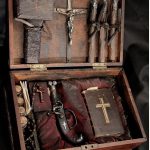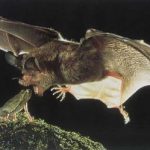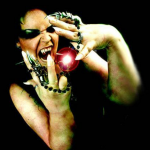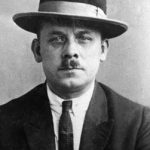The most common name for an undead vampire in Poland seems to be upier or upior. The same names can be found in the neighboring countries of the Ukraine, and Byelorussia. Under this name, the Polish undead vampire is usually quite similar to those in these neighboring countries.
A description of the undead vampire in Poland and Russia is given in chapter 13 of the 1753 edition of Treatise on Vampires and Revenants by the French Dominican monk and scholar, Dom Augustine Calmet. Calmet’s sources for his chapter 13 was an article published in the 1693- 1694 edition of the French journal Mercure Gallant. According to this, the oupire first eats his linen shroud when he first revives from his death. The oupire can appear from noon to midnight. At night, he attacks his friends and especially his relatives, embracing them and then sucking their blood. The way to destroy an oupire is to exhume the corpse and then either decapitate it or “open its heart.”

The blood that then gushes out is regarded to be that of the vampire’s victims. The surviving victims or potential victims sometimes mix this blood with flour to make a dough. They then bake this dough and eat the resulting bread to cure themselves of the after-affects of the vampire’s bite. Somewhat similar practices involving ingesting some remains of the vampire also occured in Romania (ashes of the heart mixed with water or the blood itself) and in New England (ashes of the heart mixed with water).
Another early source on the Polish vampire is the manuscript Everio Atheism (“The Destruction of Atheism”) written by a Jesuit priest, S. J. Gengell. This was reprinted in 1721 in a natural history of Poland, Historia Naturalis Curiosa Regni Poloniae by another Jesuit priest, Gabriel Rzaczynski.
Here the name for the Polish vampire is given as upier, or upierzyca if it is female. According to this, the upier rises from its grave and wanders past cross-roads and houses, appearing here and there to various people. It often attacks the person who sees it and suffocates him. It is said that when the corpse of the vampire is exhumed, it is often found that not only is the flesh undecayed and flexible, but also the head, eyes, mouth, and tongue sometimes move.
Often parts of the shroud and the corpse itself are found to be partly devoured. The relevant passage here can be found on page 113 of The Darkling by Jan Petrowski, Slavica Publishers, 1989








